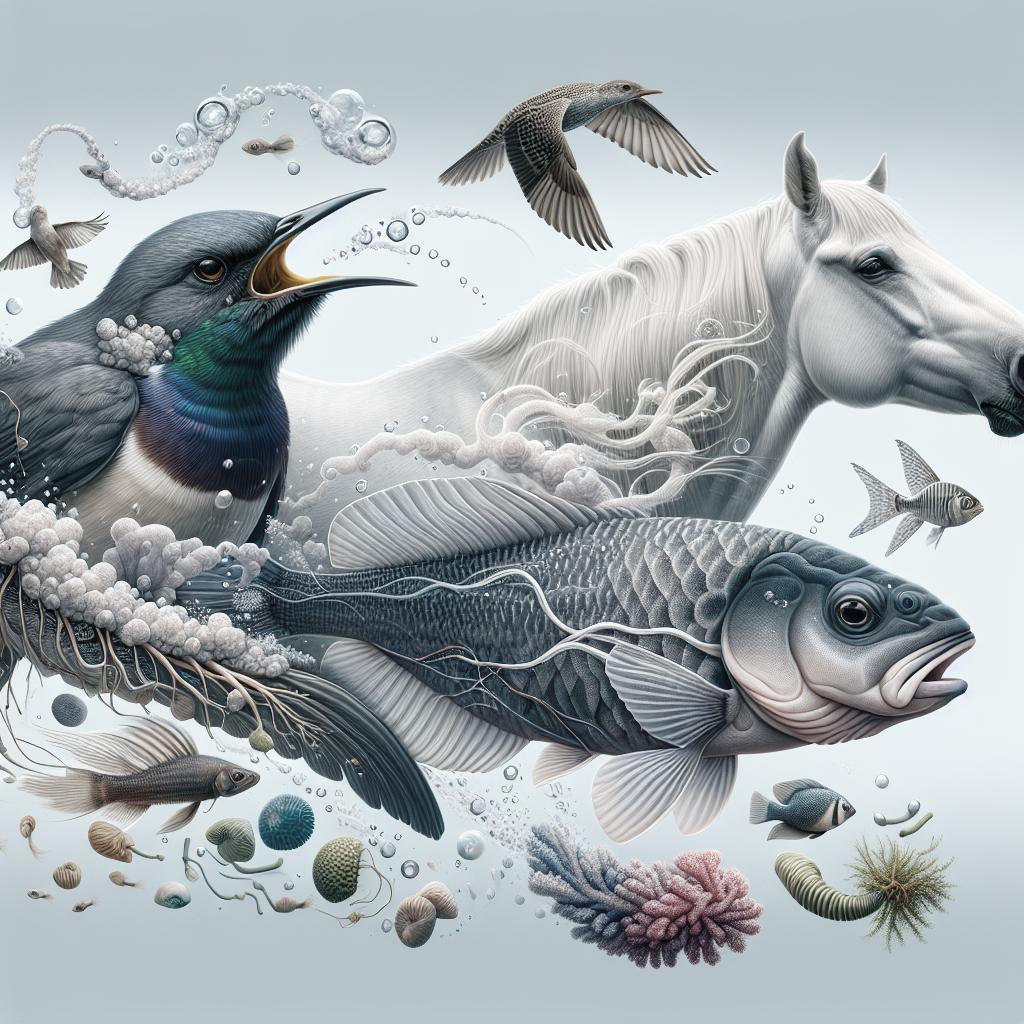“`html
Do you have a science question? We can help!
Ever wonder how animals get rid of carbon dioxide? Understanding this process is essential to comprehending how different species sustain life. In this blog post, we’ll explore how various animals—ranging from mammals to insects and aquatic animals—remove carbon dioxide from their bodies. We’ll delve into the breath of life and detail the mechanisms involved across different species. Stay tuned to discover the fascinating biological processes that keep animals alive and thriving.
The Breath of Life
In mammals, including humans, the process of expelling carbon dioxide begins in the lungs. When we inhale, oxygen enters the lungs and diffuses into the bloodstream through tiny air sacs called alveoli. Simultaneously, carbon dioxide, a waste product of cellular respiration, diffuses from the blood into the alveoli. During exhalation, this carbon dioxide is expelled from the body, ensuring that our cells remain efficiently oxygenated and free of harmful waste gases.
Reptiles and birds have a different respiratory system that is equally effective. Birds possess a unique system involving air sacs and a series of passageways that ensure a continuous flow of air through their lungs, allowing for a more efficient gas exchange. Reptiles, depending on the species, either use lungs similar to mammals or rely on more skin-based respiration methods. Both methods culminate in the expulsion of carbon dioxide to maintain internal balance.
Insects exhibit an entirely different mechanism for removing carbon dioxide. They have a network of tiny tubes called tracheae that deliver oxygen directly to their tissues and remove carbon dioxide without involving a circulatory system. Gases diffuse through small openings called spiracles, located on the insect’s body. This highly efficient system allows insects to sustain high metabolism rates without the need for lungs or blood-based oxygen transport.
Share this:
Want to spread the word about how animals expel carbon dioxide? Share this article on social media or email it to a friend who’s passionate about biology. By sharing this information, you contribute to a better understanding of the fascinating processes that keep the animal kingdom alive and well. Encourage curiosity and scientific exploration by educating others about these essential life processes.
Citations
- Smith, J. (2020). Respiratory Systems in Mammals. Journal of Biological Sciences.
- Jones, L. & Hernandez, M. (2019). Comparative Anatomy of Bird and Reptile Lungs. Comparative Physiology Review.
- Clark, A. (2018). The Inner Workings of Insect Respiratory Systems. Entomology: A Reviews Journal.
About Alison Pearce Stevens
Alison Pearce Stevens is a science writer with a keen interest in the natural world. With degrees in both Biology and Journalism, Alison brings a unique perspective to her writing. She loves to dissect complex scientific topics and present them in an engaging and understandable way. Her passion for wildlife and education is evident in her thought-provoking articles. When she’s not writing, you can find her exploring the great outdoors or immersed in a good book on natural science.
Final thoughts
| Animal Group | Method of CO2 Removal |
|---|---|
| Mammals | Through lungs using alveoli for gas exchange |
| Birds | Continuous airflow through specialized air sacs and lungs |
| Reptiles | Combination of lung respiration and skin-based respiration |
| Insects | Diffusion through tracheae and spiracles |
“`


